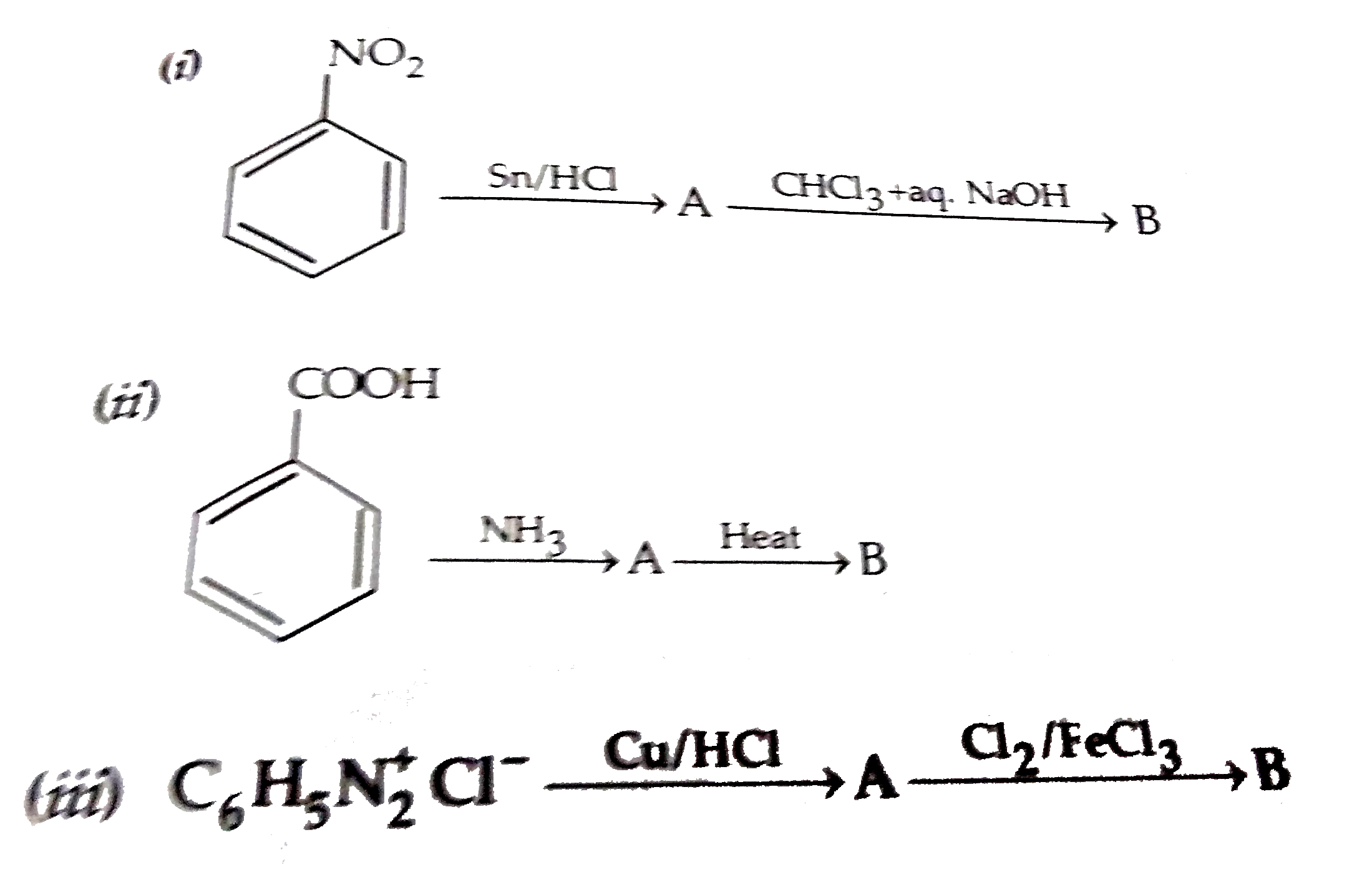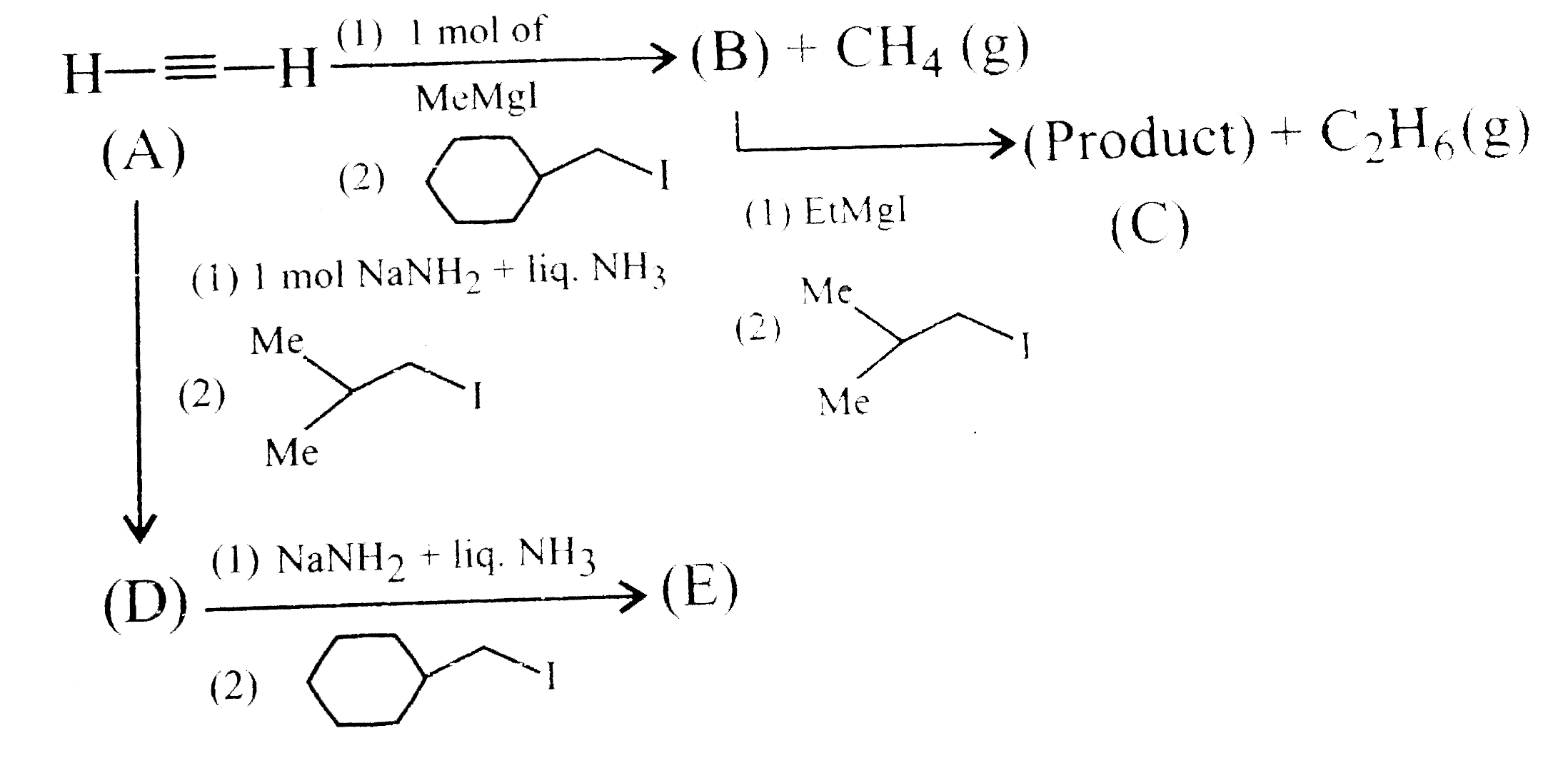Write the rate law units of rate constant for the following elementary reactions.
(a) A+B→Products . (b) 2A→ Products , (c) 2A+B→ Products and (d) A+2B→ Products.
To determine the rate law units of the rate constant for the given elementary reactions, we will follow these steps for each reaction:
Step 1: Identify the Reaction Order
The order of a reaction is equal to the sum of the powers of the concentration terms in the rate law. For elementary reactions, the order is equal to the molecularity of the reaction.
Step 2: Write the Rate Law Expression
The rate law expression can be written as:
Rate=k×(Reactant1)n1×(Reactant2)n2
where k is the rate constant, and n1,n2 are the stoichiometric coefficients (molecularity) of the reactants.
Step 3: Determine the Units of Rate Constant
The units of the rate constant k depend on the overall order of the reaction. The general formula for the units of the rate constant is:
Units of k=Units of RateUnits of ConcentrationOrder
where the units of rate are typically mol L−1s−1 and the units of concentration are mol L−1.
Step 4: Calculate the Units for Each Reaction
(a) Reaction: A+B→Products
- Order: 1 (A) + 1 (B) = 2
- Rate Law: Rate=k1(A)1(B)1
- Units of k1:
k1=mol L−1s−1(mol L−1)2=L mol−1s−1
(b) Reaction: 2A→Products
- Order: 2 (A) = 2
- Rate Law: Rate=k2(A)2
- Units of k2:
k2=mol L−1s−1(mol L−1)2=L mol−1s−1
(c) Reaction: 2A+B→Products
- Order: 2 (A) + 1 (B) = 3
- Rate Law: Rate=k3(A)2(B)1
- Units of k3:
k3=mol L−1s−1(mol L−1)3=L2mol−2s−1
(d) Reaction: A+2B→Products
- Order: 1 (A) + 2 (B) = 3
- Rate Law: Rate=k4(A)1(B)2
- Units of k4:
k4=mol L−1s−1(mol L−1)3=L2mol−2s−1
Summary of Rate Constant Units
- (a) k1: L mol−1s−1
- (b) k2: L mol−1s−1
- (c) k3: L2mol−2s−1
- (d) k4: L2mol−2s−1
The order of a reaction is equal to the sum of the powers of the concentration terms in the rate law. For elementary reactions, the order is equal to the molecularity of the reaction.
The rate law expression can be written as:
Rate=k×(Reactant1)n1×(Reactant2)n2
where k is the rate constant, and n1,n2 are the stoichiometric coefficients (molecularity) of the reactants.
The units of the rate constant k depend on the overall order of the reaction. The general formula for the units of the rate constant is:
Units of k=Units of RateUnits of ConcentrationOrder
where the units of rate are typically mol L−1s−1 and the units of concentration are mol L−1.
- Order: 1 (A) + 1 (B) = 2
- Rate Law: Rate=k1(A)1(B)1
- Units of k1:
k1=mol L−1s−1(mol L−1)2=L mol−1s−1
- Order: 2 (A) = 2
- Rate Law: Rate=k2(A)2
- Units of k2:
k2=mol L−1s−1(mol L−1)2=L mol−1s−1
- Order: 2 (A) + 1 (B) = 3
- Rate Law: Rate=k3(A)2(B)1
- Units of k3:
k3=mol L−1s−1(mol L−1)3=L2mol−2s−1
- Order: 1 (A) + 2 (B) = 3
- Rate Law: Rate=k4(A)1(B)2
- Units of k4:
k4=mol L−1s−1(mol L−1)3=L2mol−2s−1
- (a) k1: L mol−1s−1
- (b) k2: L mol−1s−1
- (c) k3: L2mol−2s−1
- (d) k4: L2mol−2s−1
Similar Questions
Rate law for the elementary reaction 2AB→k1A2+B2 will be:
View SolutionWrite the products A and B in the following :

View SolutionIn the following sequence of reactions, products (B) to (E) are formed:

Product (D) is:
View SolutionIn the following sequence of reactions, products (B) to (E) are formed:

Product (B) is:
View SolutionIn the following sequence of reactions, products (B) to (E) are formed:

Product (C) is:
View SolutionIdentify products A and B in the following reaction

View SolutionIn the following sequence of reaction
_E01_707_Q01.png)
the product B is :
View SolutionIn the following sequence of reactions, products (B) to (E) are formed:

Product (E) is:
View SolutionWrite structures of the products A, B,C,D and E in the following scheme.

View SolutionConsider the following reactions :
_S01_366_Q01.png)
The product (B) is
View Solution
